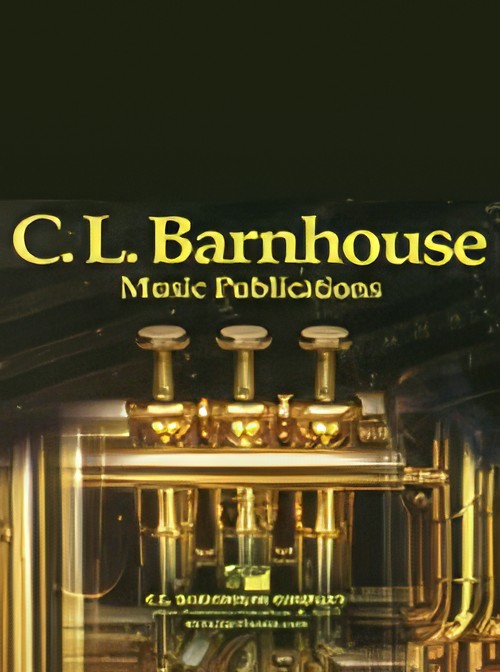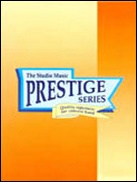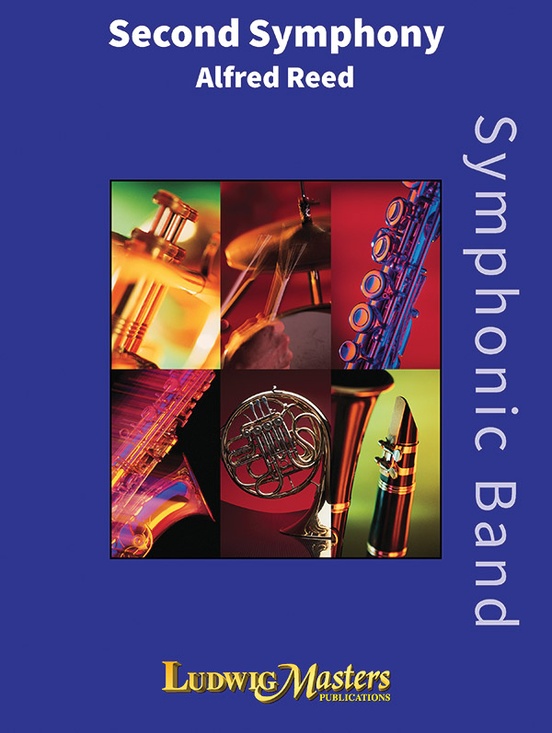Results
-
 £85.00
£85.00Jubilant Holiday
Following up on the success of his arrangement of Carol of the Bells, O'Loughlin provides advancing bands with a truly symphonic piece that includes variations on the famous In Dulci Jubilo. You will note that Sean quotes passages from the Nutcracker and hints of other holiday favorites.
Estimated dispatch 12-14 working days
-
 £104.00
£104.00Side Paths - Andreas Ziegelbäck
This symphonic wind orchestra piece is a homage to the painting "Main Path and Side Paths" by the painter and graphic artist Paul Ernst Klee. At the center of the painting runs a straight main path in vibrant colors, surrounded by irregular side paths that are nevertheless held in similar color tones.Just like in the painting, the piece repeats a short motif in various variations, while the surroundings of this motif constantly change, similar to the side paths in the painting. The color gradients and paths of the painting are considered an allegory of human life. Just as in our lives, ideas, goals, and desires constantly change, our path often leads through different routes. Even when we pursue a great goal, we usually reach it only through numerous detours and sometimes unexpected diversions.The piece carries a deep message of hope with a second theme: it encourages us to hold on to our dreams and pursue them with unwavering determination, even if the path is marked by unexpected turns and seemingly insurmountable obstacles. It is an ode to the youth around the world who are still at the beginning of their journey to realize their dreams. May it give them the strength and determination to continue their path undeterred even in the midst of the greatest challenges.
Estimated dispatch 7-14 working days
-
 £121.00
£121.00Greensleeves Variants - Robert E. Foster
Based on one of Englands most beloved folksongs, this symphonic treatment opens with a bold brass fanfare and proceeds through variations utilizing the full spectrum of tonalities and colors of the modern wind band. This is sure to be a concert highlight.
Estimated dispatch 7-14 working days
-
 £204.99
£204.99So Nata Per Te - Ferrer Ferran
So Nata Per Te -- or Naci para ti in Spanish -- translates as "I was born for you". This symphonic suite is inspired by Pepe Domingo, a great music enthusiast and lover of life who wanted to commemorate his long and happy marriage to his dear wife, Concha. He commissioned Ferrar Ferran to set to music the great bond of their partnership: the couple will be able to close their eyes and relive through the music their most precious memories one by one.So Nata Per Te is a suite of many contrasts. Its contemporary, modern flavours are entertaining while the colourful variations are exciting and fascinating. Audience members may recall happy memories in their ownlives listening to the delightful, famous tunes that appear throughout the work and, although somewhat different from the originals, they are easily recognisable.Ferrer Ferran dedicated this work to Pepe Domingo and his wife Concha not only for their great enthusiasm and passion for music, but also for their mutual love. So Nata Per Te was premiered on 27 February 2010 at the Auditorio Florida of Paiporta (Spain) by the Banda Primitiva de Paiporta, conducted by the composer.
Estimated dispatch 7-14 working days
-
£301.00
Praise Jerusalem! - Alfred Reed
A major work of lasting importance for the modern symphonic band or wind ensemble by this acknowledged master of the medium. This set of variations on a 7th Century Armenian Communion Easter hymn calls forth every possible sound, color and tonal effect, showing off the winds, brasses and percussion of the modern band in all their glory. An overwhelming conclusion that blends an additional six-voice brass choir with the full band makes this one of the finest closing works for a concert in many years.
Estimated dispatch 7-14 working days
-
£123.95
Jubilant Holiday - Sean O'Loughlin
Following up on the success of his arrangement of Carol of the Bells, O'Loughlin provides advancing bands with a truly symphonic piece that includes variations on the famous In Dulci Jubilo. You will note that Sean quotes passages from the Nutcracker and hints of other holiday favorites.
Estimated dispatch 7-14 working days
-
 £275.00
£275.00Praise Jeruslem! (Concert Band - Score and Parts) - Reed, Alfred
Kovia YeroosaghemVariations on a Armenian Easter HymnA major work of lasting importance for the modern symphonic band or wind ensemble by this acknowledged master of the medium. This set of variations on a 7th Century Armenian Communion Easter hymn calls forth every possible sound, colour and tonal effect, showing off the winds, brasses and percussion of the modern band in all their glory. An overwhelming conclusion that blends an additional six-voice brass choir with the full band makes this one of the finest closing works for a concert in many years.Duration: 16.45
Estimated dispatch 7-14 working days
-
£204.99
So Nata Per Te Wind Band Set (Score & Parts)
So Nata Per Te -- or Naci para ti in Spanish -- translates as "I was born for you". This symphonic suite is inspired by Pepe Domingo, a great music enthusiast and lover of life who wanted to commemorate his long and happy marriage to his dear wife, Concha. He commissioned Ferrar Ferran to set to music the great bond of their partnership: the couple will be able to close their eyes and relive through the music their most precious memories one by one.So Nata Per Te is a suite of many contrasts. Its contemporary, modern flavours are entertaining while the colourful variations are exciting and fascinating. Audience members may recall happy memories in their own lives listening to the delightful, famous tunes that appear throughout the work and, although somewhat different from the originals, they are easily recognisable.Ferrer Ferran dedicated this work to Pepe Domingo and his wife Concha not only for their great enthusiasm and passion for music, but also for their mutual love. So Nata Per Te was premiered on 27 February 2010 at the Auditorio Florida of Paiporta (Spain) by the Banda Primitiva de Paiporta, conducted by the composer. 24:45
Estimated dispatch 7-14 working days
-
 £124.95
£124.95SWORD AND THE CROWN, The (Prestige Concert Band - Score and Parts) - Gregson, Edward
In 1988 I was commissioned by the Royal Shakespeare Company to write the music for The Plantagenets trilogy, directed by Adrian Noble in Stratford-upon-Avon. These plays take us from the death of Henry V to the death of Richard III. Later, in 1991, I wrote the music for Henry IV parts 1 and 2, again in Stratford. All of these plays are concerned with the struggle for power (the crown) through the use of force (the sword) and they portray one of the most turbulent periods in the history of the British monarchy.This work quickly became established in the mainstream repertoire and has received performances worldwide as well as five commercial recordings and many broadcasts. In 2002 I was approached by the Parc and Dare Band regarding their summer festival and commissioned to do a version for brass band. This was given its first performance in Treorchy Hall by the combined bands of Black Dyke and Parc and Dare conducted by Nicholas Childs.When the Royal Air Force Music Services commissioned me to write a work especially for their British tour in 1991 I immediately thought of turning to this music and transforming some of it into a three-movement suite for symphonic band.The first movement opens with a brief fanfare for two antiphonal trumpets (off-stage), but this only acts as a preface to a Requiem aeternam (the death of Henry V) before changing mood to the English army on the march to France; this subsides into a French victory march, but the English army music returns in counterpoint. Finally, a brief reminder of the Requiem music leads to the triumphal music for Richard Plantagenet, Duke of York, father of Edward IV and Richard III (the opening fanfare transformed).The second movement takes music from the Welsh Court in Henry IV (part 1) which is tranquil in mood; distant fanfares foreboding battles to come are heard, but the folktune is heard three times in different variations and the movement ends as it began with alto flute and gentle percussion.The final movement starts with two sets of antiphonally placed timpani, drums and tam-tam, portraying the 'war machine' and savagery of battle. Trumpet fanfares and horn calls herald an heroic battle theme which, by the end of the movement, transforms itself into a triumphant hymn for Henry IV's defeat of the rebellious forces.- Edward GregsonPerformance time 13'54"Recorded on QPRM117D FESTIVAL OF MUSIC 1991, Massed Bands of the Royal Air ForceRecorded on QPRM120D THE SWORD AND THE CROWN, Central Band of the Royal Air Force'Finale' recorded on QPRM142D FESTIVAL OF MUSIC 2002, Massed Bands of the Royal Air Force)
Estimated dispatch 7-14 working days
-
 £170.00
£170.00Second Symphony - Alfred Reed
Commissioned in the late Fall of 1975, work on the SECOND SYMPHONY was not begun until the Summer of 1977, when the score was completed in sketch form in three months, July through September. The instrumentation was begun in the late Winter of that same year and the Full Score completed on March 27th, 1978. The first performance took place in Fairchild Auditorium on the campus of Michigan State University on May 6th, 1978, by the Michigan State University Symphonic Band under the direction of Kenneth G. Bloomquist. The symphony is a single-movement work embracing three distinct sections. The first, marked is a freely constructed passacaglia built on a flowing theme derived from the tone row that underlies the entire score: Bb-F-E-Ab-G-D-Db-C-Cb-Gb-Eb-A, and which is developed in alternating variations leading to a powerful climax at its close. The second section is, in reality, a tense, hard-driving double fugue characterized by a constant march-like rhythm underlying the further development of the original theme and its countersubject in both duple and triple meters. This section, marked also ends in an overwhelming climax and then dies away, preparing for the third and final section. This final portion of the music, marked is based upon two long, lyric themes, also derived from the row, that alternate with occasional reminders of some of the thematic material from the second section, now transformed into a rich, glowing and relaxed tonal tapestry woven together from the myriad of tonal colors available in contemporary scoring practice for the winds. At the very end, after a fortissimo re-statement of the theme in its original form as derived from the row, there is a gradual ebbing of the flood of tone from the full ensemble as the various choirs drop out one by one, leaving only a dark, warm color of low Clarinets, Baritone and Tuba, hinting at the opening of the symphony, together with a last reminder of the original motif in the Bells and Vibraphone, suggesting, for the work as a whole, an arch-form.
Estimated dispatch 3-5 working days
